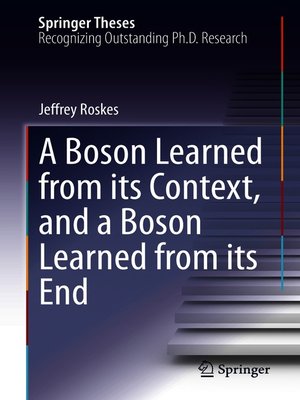A Boson Learned from its Context, and a Boson Learned from its End
ebook ∣ Springer Theses
By Jeffrey Roskes

Sign up to save your library
With an OverDrive account, you can save your favorite libraries for at-a-glance information about availability. Find out more about OverDrive accounts.
Find this title in Libby, the library reading app by OverDrive.



Search for a digital library with this title
Title found at these libraries:
| Library Name | Distance |
|---|---|
| Loading... |
This thesis develops fundamental ideas and advanced techniques for studying the Higgs boson's interactions with the known matter and force particles. The Higgs boson appears as an excitation of the Higgs field, which permeates the vacuum. Several other phenomena in our Universe, such as dark energy, dark matter, and the abundance of matter over antimatter, remain unexplained. The Higgs field may prove to be the connection between our known world and the "dark" world, and studies of the Higgs boson's interactions are essential to reveal possible new phenomena. The unique feature of this work is simultaneous measurement of the Higgs boson's associated production (its context, to use the language of the title) and its decay (its end), while allowing for multiple parameters sensitive to new phenomena. This includes computer simulation with Monte Carlo techniques of the complicated structure of the Higgs boson interactions, the matrix-element calculation of per-event likelihoods for optimal observables, and advanced fitting methods with hundreds of intricate components that cover all possible parameters and quantum mechanical interference. This culminates in the most advanced analysis of LHC data in the multi-parameter approach to Higgs physics in its single golden four-lepton decay channel to date. Optimization of the CMS detector's silicon-based tracking system, essential for these measurements, is also described.







